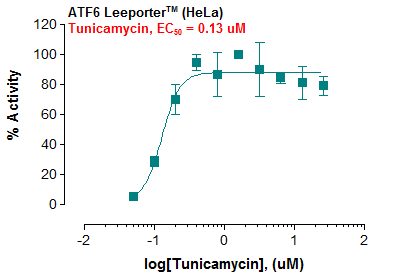Recombinant Human Scavenger Receptor B2/SR-B2/LIMPII/CD36L2 (C-6His)
Shipping Info:
For estimated delivery dates, please contact us at [email protected]
| Amount : | 50 µg |
| Content : | Lyophilized from a 0.2 µm filtered solution of 20mM PB, 150mM NaCl, pH 7.2. |
| Storage condition : | Lyophilized protein should be stored at -20°C, though stable at room temperature for 3 weeks. Reconstituted protein solution can be stored at 4-7°C for 2-7 days. Aliquots of reconstituted samples are stable at -20°C for 3 months. |
| AA sequence : | RVFQKAVDQSIEKKIVLRNGTEAFDSWEKPPLPVYTQFYFFNVTNPEEILRGETPRVEEVGPYTYRELRNKANIQFGDNGTTISAVSNKAYVFERDQSVGDPKIDLIRTLNIPVLTVIEWSQVHFLREIIEAMLKAYQQKLFVTHTVDELLWGYKDEILSLIHVFRPDISPYFGLFYEKNGTNDGDYVFLTGEDSYLNFTKIVEWNGKTSLDWWITDKCNMINGTDGDSFHPLITKDEVLYVFPSDFCRSVYITFSDYESVQGLPAFRYKVPAEILANTSDNAGFCIPEGNCLGSGVLNVSICKNGAPIIMSFPHFYQADERFVSAIEGMHPNQEDHETFVDINPLTGIILKAAKRFQINIYVKKLDDFVETGDIRTMVFPVMYLNESVHIDKETASRLKSMINTTLDHHHHHH |
Source: Human Cells.
MW :47.59kD.
Recombinant Human SCARB2 is produced by our Mammalian expression system and the target gene encoding Arg27-Thr432 is expressed with a 6His tag at the C-terminus. Scavenger Receptor Class B Member 2 (SCARB2) is a type III multi-pass membrane glycoprotein that is located primarily in limiting membranes of lysosomes and endosomes on all tissues and cell types so far examined. Earlier studies in mice and rat suggested that this protein may participate in membrane transportation and the reorganization of endosomal/lysosomal compartment. The protein deficiency in mice was reported to impair cell membrane transport processes and cause pelvic junction obstruction, deafness, and peripheral neuropathy. Further studies in human showed that this protein is identified as a receptor for EV71 (human enterovirus species A, Enterovirus 71) and CVA16 (coxsackievirus A16) which are most frequently associated with hand, foot and mouth disease (HFMD). Mutations in this gene caused an autosomal recessive progressive myoclonic epilepsy-4 (EPM4), also known as action myoclonus-renal failure syndrome (AMRF). Alternatively spliced transcript variants encoding different isoforms have been found for this gene. In addition, SCARB2 also has been shown to bind thrombospondin-1, may contribute to the pro-adhesive changes of activated platelets during coagulation, and inflammation.
MW :47.59kD.
Recombinant Human SCARB2 is produced by our Mammalian expression system and the target gene encoding Arg27-Thr432 is expressed with a 6His tag at the C-terminus. Scavenger Receptor Class B Member 2 (SCARB2) is a type III multi-pass membrane glycoprotein that is located primarily in limiting membranes of lysosomes and endosomes on all tissues and cell types so far examined. Earlier studies in mice and rat suggested that this protein may participate in membrane transportation and the reorganization of endosomal/lysosomal compartment. The protein deficiency in mice was reported to impair cell membrane transport processes and cause pelvic junction obstruction, deafness, and peripheral neuropathy. Further studies in human showed that this protein is identified as a receptor for EV71 (human enterovirus species A, Enterovirus 71) and CVA16 (coxsackievirus A16) which are most frequently associated with hand, foot and mouth disease (HFMD). Mutations in this gene caused an autosomal recessive progressive myoclonic epilepsy-4 (EPM4), also known as action myoclonus-renal failure syndrome (AMRF). Alternatively spliced transcript variants encoding different isoforms have been found for this gene. In addition, SCARB2 also has been shown to bind thrombospondin-1, may contribute to the pro-adhesive changes of activated platelets during coagulation, and inflammation.
Always centrifuge tubes before opening. Do not mix by vortex or pipetting. It is not recommended to reconstitute to a concentration less than 100 µg/ml. Dissolve the lyophilized protein in ddH2O. Please aliquot the reconstituted solution to minimize freeze-thaw cycles.
Endotoxin : Less than 0.1 ng/µg (1 IEU/µg) as determined by LAL test.
For Research Use Only. Not for use in diagnostic/therapeutics procedures.
| Subcellular location: | Lysosome membrane |
| BioGrid: | 107388. 29 interactions. |
|
There are currently no product reviews
|


















.png)









